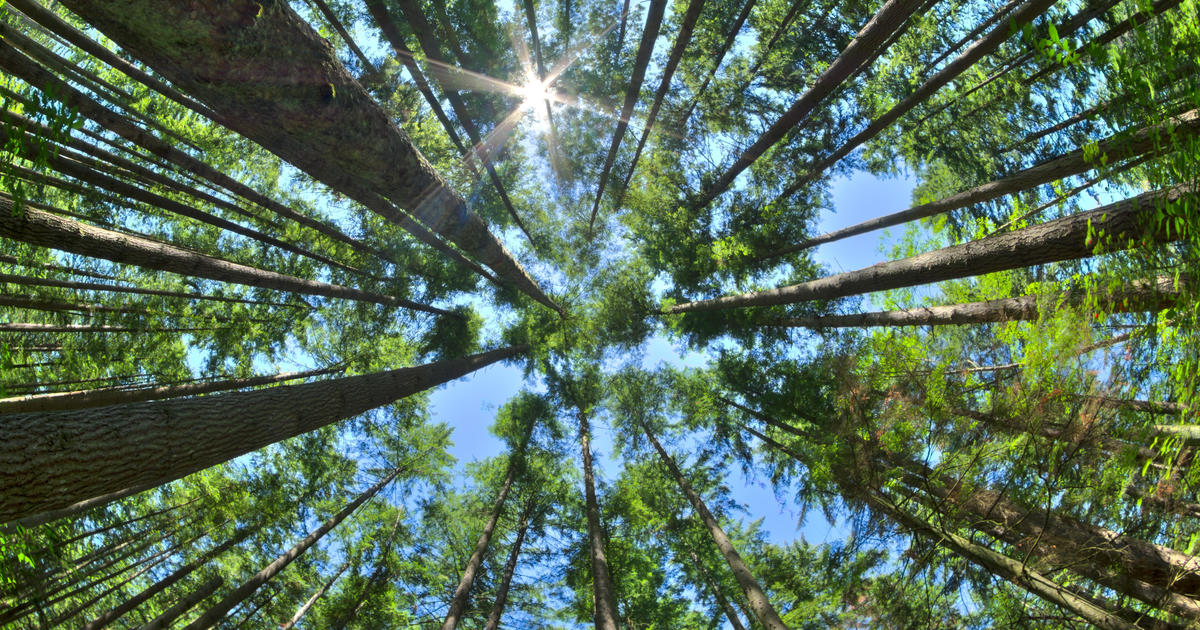
When Greta Thunberg decided to sail across the Atlantic instead of hop on a plane due to the environmental impact of flying, travelers and airline companies alike started thinking about a more environmentally friendly approach to travel. In Europe, lawmakers are even beginning to discuss possible bans on short domestic and international flights on routes served by high-speed trains.
In response to growing public concern, some companies are taking steps to address the issue. JetBlue airlines announced it will start offsetting fuel burned on all domestic flights by donating to companies that plant trees or by buying credits from solar and wind power projects.
“JetBlue is actually going a long way,” said CBS News meteorologist and climate specialist Jeff Berardelli. “Over the past 10 years, they’ve offset about 2.6 billion of their pounds of carbon — so the amount of carbon dioxide they’ve released into the atmosphere. They’ve offset that by donating to companies that plant trees that help sequester carbon dioxide … that restore kelp forests … that promote wind and solar energy. So there’s lots of ways to offset it.”
But he stressed that offsetting isn’t the same as not generating carbon emissions in the first place.
“Your left hand is emitting carbon dioxide, your right hand is making sure that projects that are sustainable are funded around the world,” Berardelli said.
While offsetting carbon usage is a step towards a cleaner atmosphere, some critics argue it doesn’t actually do enough to address the urgency of climate change.
Why not? The simple answer is that we do not have enough time.
When a tree is planted, it doesn’t achieve maturity for at least 10 to 20 years, which means it’s not immediately pulling in much carbon dioxide, Berardelli explains.
However, ahead of the recent climate summit in Madrid, the United Nations said that to keep global warming below a 1.5 degree Celsius increase by the end of the century, “we need to reduce emissions 45% by 2030 and achieve climate neutrality by 2050.”
If you buy a tree-based offset today, you’re sponsoring a reduction that won’t be fully effective until perhaps 2040.
“It’s kind of putting a Band-Aid on something when you need a tourniquet,” Berardelli said.
Timothy Searchinger, a Princeton researcher who studies land use and climate change, says that offset programs are appropriate when there are no alternative solutions and as long as they deliver “real, measurable and additional” emission reductions.
He said one way to successfully offset carbon is by re-wetting peatlands. “Many of them have been drained for carbon use. Once they’re drained they burn and put carbon back into the atmosphere at fantastic levels. You can stop that by re-wetting them,” Searchinger said.
Another criticism is that offsets may diminish the incentive to create cleaner transportation options.
Despite those concerns, the carbon offset industry is becoming a big business, worth $500 million around the world — 150 times more than it was 10 years ago.
Berardelli says travelers who wish to purchase carbon offsets when buying a plane ticket should look for companies that are certified and that have third-party screening to make sure that they’re legitimate.
The U.N. Environment Programme’s website states that “carbon offsets are not our get-out-of-jail-free card,” but says they “are useful while infrastructure and industry make the transition to electric mobility.”

